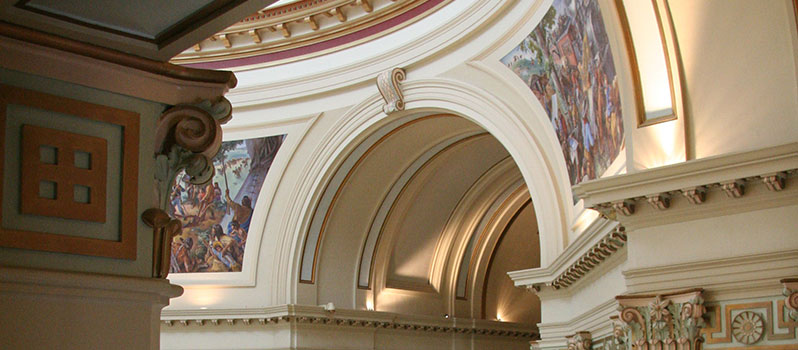
About the Oklahoma Arts Council
In 1965, Governor Henry Bellmon and the Oklahoma State Legislature established the Oklahoma Arts Council in response to a national movement to make the arts accessible to all Americans. Establishing the Oklahoma Arts Council allowed the State of Oklahoma to receive federal funding from the National Endowment for the Arts to support arts activities across the state. For more than 50 years, this system of federal, state, and private support has given Oklahomans in communities statewide access to the transforming power of the arts.
Download our FY24 Impact Report
Our Strategic Plan
Download our 2021-2025 strategic plan
Every five years, the Oklahoma Arts Council creates a new strategic plan outlining the mission, vision, guiding principles, values, and goals that will guide the work of the agency. In March 2021, the Governor-appointed Oklahoma Arts Council board approved a new strategic plan that will guide the agency through 2025. The strategic plan is the result of a comprehensive and inclusive process that included invaluable input from Oklahomans representing diverse communities statewide. Learn how we created the strategic plan.
Our Mission
The Oklahoma Arts Council leads, cultivates, and amplifies the transformative power of the arts for all Oklahomans and their communities.
What We Do
-
Award matching grants to eligible organizations to increase resources available for producing community arts and arts education programs throughout Oklahoma.
-
Support opportunities for all Oklahomans to create, perform or attend arts activities.
-
Raise public awareness about the value of the arts to the economic, educational, and cultural life of Oklahoma. The arts produce jobs and attract out-of-state tourists, directly impacting Oklahoma’s economy.
- Foster education through the arts and support efforts to implement the arts as part of the core curriculum for all students in every Oklahoma school.
Highlights in Oklahoma Arts Council history:
-
In 1971 the State Art Collection was established to provide Oklahoma artists the opportunity to be recognized in a quality collection.
-
In 1975 Oklahoma became one of the first states to implement the Governor’s Arts Awards.
-
In 1976 the four monumental murals in the State Capitol rotunda were dedicated as part of the Capitol Art Collection. Since 1976 numerous permanent works of art have been added to the collection.
-
In 1979 Governor George Nigh established the Governor’s Gallery in the Capitol to exhibit an “Artist of the Month.”
-
In 1985 during a downturn in the state’s economy, an economic impact study performed by Oklahoma State University showed nonprofit arts organizations generated $6 million in tax revenue.
-
In 1986 Governor George Nigh added the East Gallery to the Capitol.
-
The 1990s saw the passage of landmark Education Reform legislation (HB 1017) that added arts to the core curriculum. The legislation mandated visual art and music instruction for all K-12 schools in the state.
-
Also during the 90s, the North Gallery was added at the State Capitol joining the Governor’s Gallery and East Gallery.
-
During the 1990s, the Oklahoma Arts Council, working with the Capitol Preservation Commission, added numerous works of art to the Capitol Art Collection. Completed by master artists, the exquisite paintings, monumental murals and sculptures in the rotunda and public spaces of the Capitol convey the story of Oklahoma to thousands of people who visit the Capitol each year.
-
In 1994 the Oklahoma Arts Council was selected as one of the first five state agencies to have a web site hosted by the state.
-
In 2002 the Oklahoma Arts Council became the first state agency in Oklahoma to introduce interactive online grant applications, assuring efficiency and reduced costs in providing agency services.
-
In 2010 a study performed by Americans for the Arts showed Oklahoma nonprofit arts and cultural organizations have a $314.8 million impact on the state’s economy, employing 10,156 full-time equivalent jobs and generating $29 million in state and local tax revenue.
